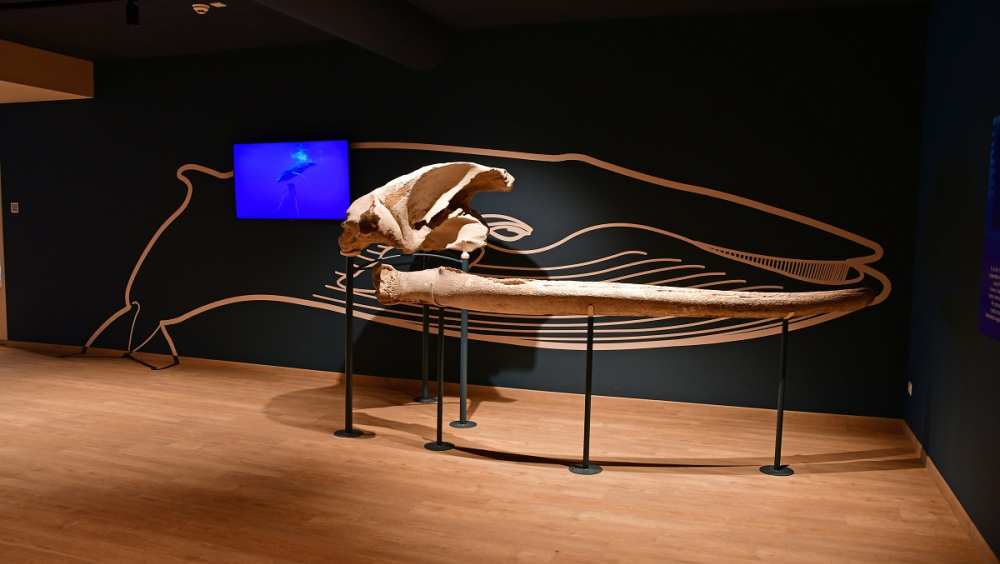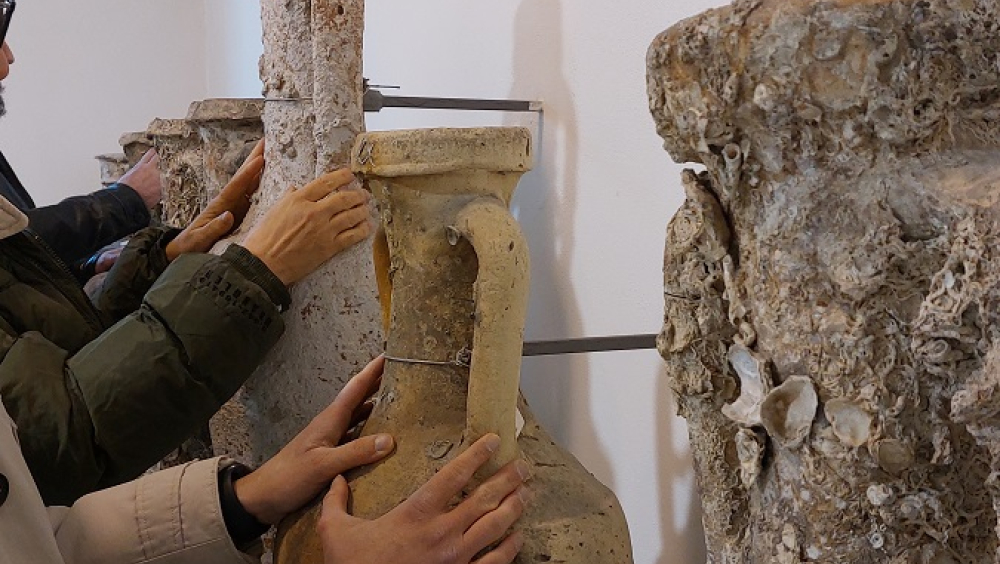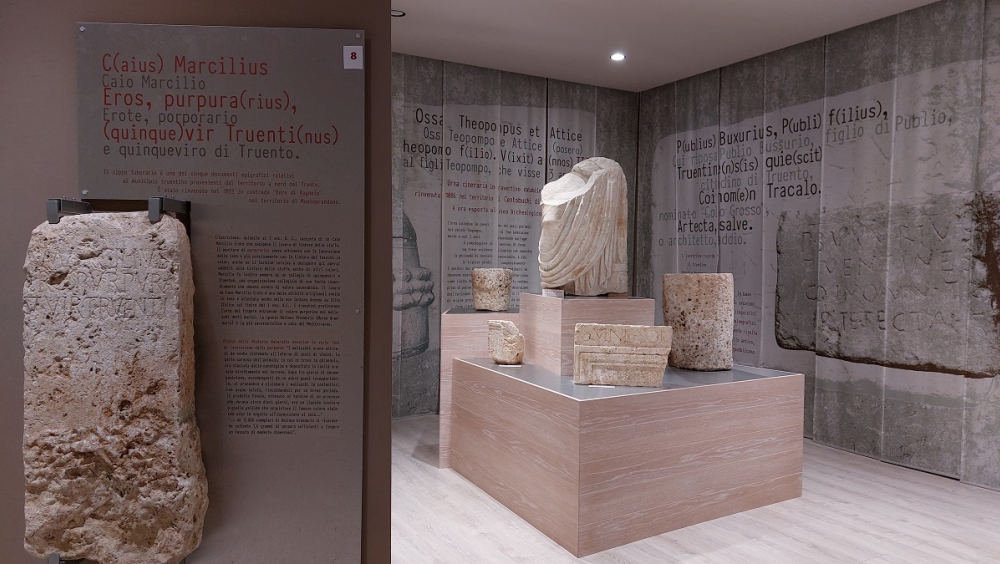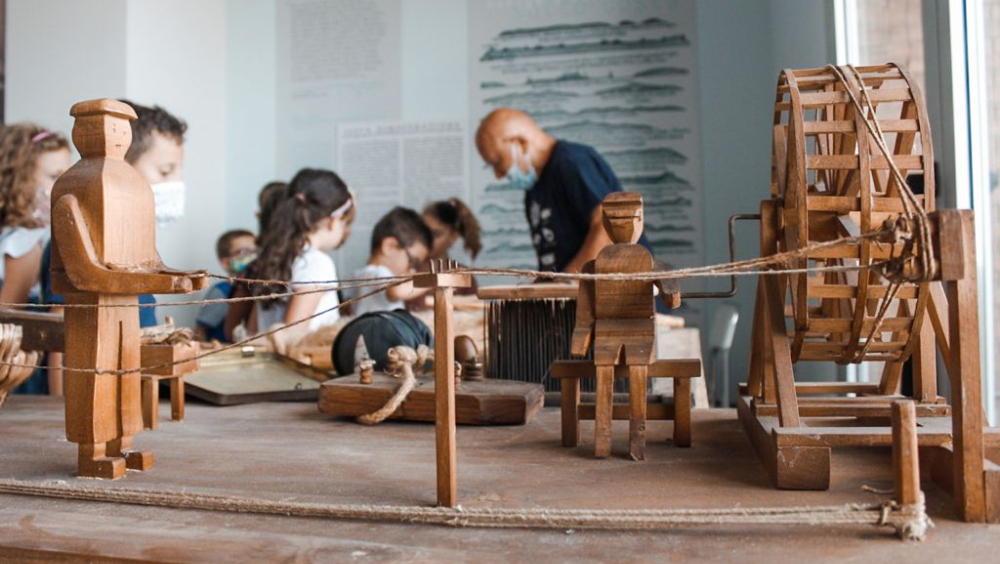MNEMOSYNE, THE MUSEUM FOR EVERYONE
This is the story of a community and a small fishing village that became a town. The cultural landscape of San Benedetto is characterised by the constant interaction between man and nature, and the Museum of Sea (Museo del Mare) represents the container that holds the historical memory of this secular relationship. It has the task of preserving, enhancing, and transmitting its peculiarities to present and future generations.
The Museum is an institution born from the maritime culture of the people of San Benedetto and fulfils the concept of the “triple Italian natural museum” theorised by André Chastel in 1980. According to him, the collection, the building in which it is conserved and the city that hosts the museum are connected like three different museum levels. This makes the museum constantly alive, representing the cultural roots of the territory that generated it. We are in fact in the presence of a diffuse museum because there are four museum sites within the city's Fish Market, which in turn is located within the port area. Here are housed: the Antiquarium Truentinum, the Amphorae Museum, the Museum of Maritime Civilisation and the “Augusto Capriotti” Fish Museum. The upper historic centre (Paese Alto) houses the Sea Picture Gallery and the Maritime Villa.
The management of the Museum, through its enhancement activities, is constantly committed to restoring value to the museum collections, working towards the idea of a social and community museum. This is why the title of our story is “Mnemosyne, the museum for everyone”: Mnemosyne is the goddess of memory and the roots that made up our museum start “from the bottom” and everyone can find something of themselves in those roots!
What makes the Museo del Mare a “community museum” is primarily the way it was conceived and how it has been enriched over the years: the people themselves contributed to its creation. In 1956, thanks to a group of sport fishing enthusiasts, who witnessed a heated discussion on the exact name of a marine specimen. In that moment it was born the idea of collecting and preserving the most common species of fish in a chemical solution. They collected with captions showing the scientific name and the various dialectal names. Over the years, fishermen from San Benedetto brought to the museum the rarest and most distant species caught by their nets. Thanks to a donation from Dr. Giovanni Perotti, the Amphorae Museum was established in 2003, with artefacts from the Mediterranean from the trawl fishery.
In 2011, the Museum of Seafaring Civilization was created, and it is organized by narrative units. It narrates the tangible and intangible culture of the territory: the work of rope-makers, retare and masters of the shipwrights, life at sea and the commercialization of the fishing, showing places and equipment donated by citizens.
The Antiquarium Truentinum is a small archaeological museum established in 2012 that narrates the development of the territory from the Stone Age to the Middle Ages.
The Sea Picture Gallery was arranged in 2009 in the historic Bice Piacentini Palace and displays works dedicated to the maritime cultural landscape created by artists such as Adolfo De Carolis, Armando Marchegiani and Alfred Chatelain. Finally, the 1st-century B.C. Maritime Villa was inaugurated in 2020, backdating the birth of the town and rewriting its history. It is a structure consisting of a residential and productive sector.
Each section of the Sea Museum shows, through different disciplines, the richness of the town’s tangible and intangible heritage.
In July 2020, after the lockdown due to the Covid-19 Pandemic, our cooperative’s adventure in managing the museum began: what do we have to do in such a difficult time for culture? We decided that our strong point would be to reawaken the cultural roots of the community in the conviction that only a socially useful museum can be sustainable. In the following difficult months of restrictions, we involved the community, institutions, and associations in the area in a network of dialogue and planning. We also spent long days interviewing local elders who were custodians of ancient local traditions, for example, fishermen, women who made nets, and retired rope makers. Basing our action on the principles of the Faro Convention and the value of cultural heritage to communities, our action has been based on the beginning on intergenerational dialogue and actions. We promoted encounters between elders and children in educational activities and involving schools and families in activities to increase awareness of environmental and sustainable issues in collaboration with the Harbor master’s Office and Universities.
The strong link that the museum has with the city’s fish market, being in the same complex, has been strengthened through many activities with merchants and fishermen, especially during visits to the fish auction at night or walks along the harbor. San Benedetto del Tronto is a popular tourist destination during the summer period, but its vocation is purely seaside: in fact, modernization has cancelled many traces of the past and in some cases dulled historical memory among new generations. Our mission has been to awaken in the community a sense of belonging to their cultural roots by leading them to experience the city’s heritage, not as passive consumers, but as protagonists. All the Museum’s enhancement activities are accompanied by the Educating Community in the figures, not only of specialists and associations, but especially of private citizens who are willing to pass on their knowledge.
The story we present narrates the direction in which we are moving. We want that this community is the bearer of transversal values such as sustainability, urban requalification, and above all, accessibility, and social inclusion. In fact, we believe that culture is an opportunity: it is known by the children and young people who participated to our project Rentro al Porto, which gave families with economic and social fragility the opportunity to actively experience the museum through educational, scientific, and artistic activities as well as to be protagonists of urban requalification actions. This is known by members of the Italian Union of the Blind and Visually Impaired and members of the National Association of the Deaf, who became “Guides for a day” accompanying visitors to the halls of our museums to acquaint them with reality from new points of view. Culture in fact eliminates distances: we dream of being able to unite in one project and in one choral action all these important themes within a project that we like to call “social museum.” We dream that culture becomes the means to reduce distances towards the perception of the “different” from us in so many senses: we need to realize not only inclusive and accessible guided tours for different audiences, but that these special visitors become the protagonists of the initiatives. These initiatives will take place through museum and city tours, educational workshops and heritage education activities in which associations and professionals collaborate closely with the “grandparents” of the museum, our Educating Community, who play an important role in our educational actions.
We would like to spread the cultural roots of the community which is the starting point for a cultural project rooted in the social fabric of the town: respect for diversity, inclusion, intergenerational dialogue, a more sustainable society. We mean a museum of all and for everyone!
The Museum of the Sea is a cultural institute that recognizes the importance of local cultural heritage in a European dimension. It embraces the definition of cultural heritage, from the Council of Europe Framework Convention, as “a set of resources inherited from the past that peoples identify, regardless of who owns them, as reflecting and expressing their evolving values, beliefs, knowledge and traditions.”
Our goal is to draw attention to the heterogeneity of maritime tangible and intangible cultural heritage. This heritage is characterized by material objects of various types: photographs, tools used by fishermen, hemp workers and rope makers. As well as Marine specimens from all parts of the world embalmed for many years, archaeological finds, amphoras from all over the Mediterranean Sea. It is also very important the intangible heritage made up of stories, living stories, knowledge passed on orally, poems and songs.
To enhance this heritage, we actively involve people and the local community. So that the main protagonists of our actions are the local elderly, schools, and families (with a greater focus on the most socially and economically fragile ones), people with physical, mental and sensory disabilities, guaranteeing inclusion and accessibility, through a network of cooperation with various associations working in the socio-cultural field.
Our mission is to make cultural heritage known through a different perspective, starting with the generations of the present and passing it on to future generations, with a view to the sustainable use of that heritage.
The Museum of the Sea, which is a member of the Association of Maritime Museums of the Mediterranean, is committed to promoting and safeguarding the heritage and disseminating the maritime culture. The maritime culture has the same values of European communities, those of the cities facing the sea, encouraging cross-border cooperation.



